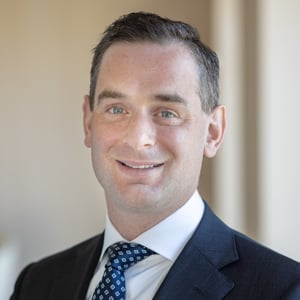US fund managers (𝗨𝗦𝗙𝗠𝘀) raising capital in Europe typically establish a Luxembourg access point to their fund complex, usually in the form of a special limited partnership (𝗦𝗖𝗦𝗽), managed by a Luxembourg authorised alternative investment fund manager (𝗟𝘂𝘅 𝗔𝗜𝗙𝗠), allowing the fund to be marketed across the EU under the marketing passport to professional investors.
Once the SCSp is established, the Lux AIFM must first notify the Luxembourg regulator (𝗖𝗦𝗦𝗙) that it manages the SCSp. Upon the CSSF’s response, the AIFM must file a marketing notification. The overall process with the CSSF usually takes 3 to 5 weeks from the establishment of the SCSp.
Together with the marketing notification, drafts of the long form limited partnership agreement and potentially a PPM are filed, together with ancillary documents. After receipt of the file, the CSSF transmits it to the local regulators of the targeted EU countries. Then, the CSSF notifies the Lux AIFM, and the marketing activities can start. There is no need to wait for any approvals from local regulators in the targeted EU States nor to have any direct contact with local regulators, which underlines the core idea behind the marketing passport.
In case of a planned material change to the filed documentation, the Lux AIFM must notify the CSSF 1 month in advance of the implementation of such change. Most industry participants are comfortable that updated draft fund documents can be shared with prospective investors, provided that the changes are not effectively implemented. In practice, it means that investors could not be admitted to the SCSp based on the updated documents before the end of the one-month period. Therefore, a material change notification may de-facto suspend investor onboarding.
There is no clear guidance on what constitutes a material change. In another context, the CSSF indicated that a material change is a change that could affect an investor’s decision to invest. Potential examples include changes to the investment strategy, to the leverage provisions or to the SFDR status.
Unplanned material changes necessitate notification to the CSSF immediately upon their implementation but are not subject to the one-month period applicable to planned material changes. In practice, ”unplanned” are often considered modifications driven by investors-negotiations during closing rounds.
USFM should understand that potential planned material changes to the fund documents during the fund’s offering period should be carefully managed and coordinated with the Lux AIFM as to avoid - in the worst case - a marketing standstill. To avoid any surprises while fundraising, the Luxembourg AIFM’s position on the consequences of material changes must also be discussed when the AIF is onboarded.
Want to know more about this topic? Reach out to one of our colleagues mentioned below.





